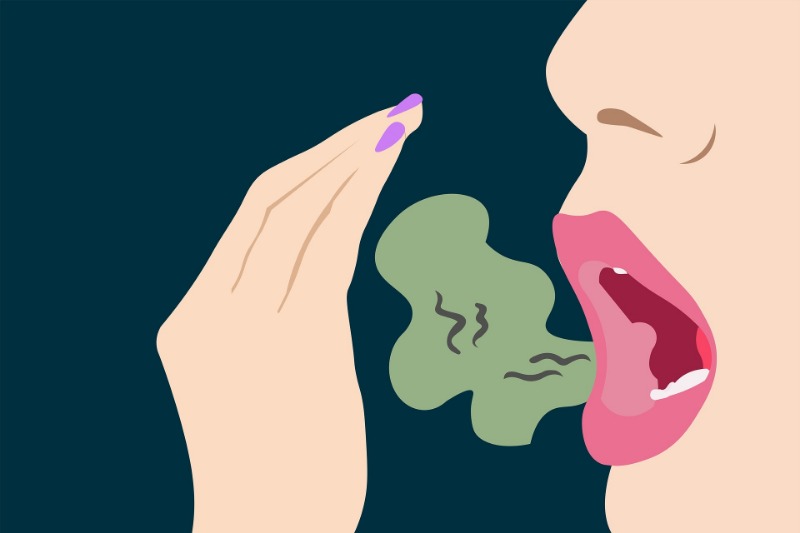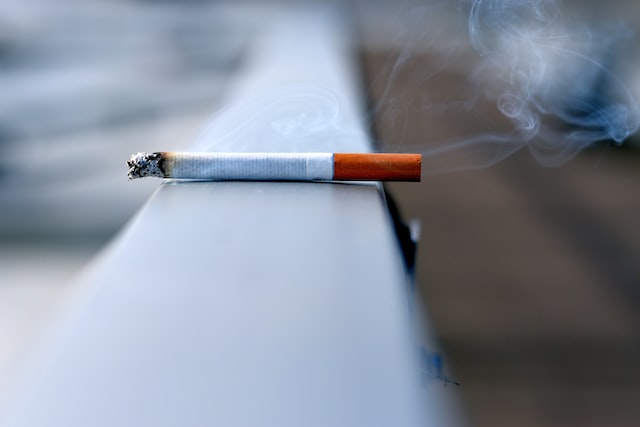
Smoking and other tobacco products are risk factors for the development of dental diseases. This is a habit that negatively affects the state of the organs and tissues of the oral cavity. In order to have a healthy smile and good overall health refrain from smoking. If you feel uncomfortable with the look or feel of your teeth, please contact the best dentist in Glendale, Dr. Sahakyan to schedule an appointment today.
Effects of Smoking on Your Teeth
In order for teeth to remain healthy, they must be surrounded by healthy gum tissue. The gum tissue can be seriously damaged if you smoke. During smoking, the soft tissues of the oral cavity are irritated, and gum inflammation occurs, which is an attractive environment for bacteria to multiply and produce cavities. The smoke contains micro particles of tobacco tar. Getting together with the smoke in the mouth, they settle on the teeth and paint the enamel a dark color. It is very difficult to clean tobacco tar from the teeth. Tobacco tar on the teeth is a source of the unpleasant smell. Many smokers are sure that getting rid of the dark plaque on their teeth is easy. Indeed, on the one hand, modern toothpaste and professional whitening are at their disposal. However, toothpaste will not give you the perfect whiteness of a smile. Whitening will have to be carried out again and again, which will negatively affect the quality and stability of the enamel.
Studies show that by age 65, about 40% of smokers are left without teeth. In contrast, among non-smokers, this figure is two times less.
Smoking leads to dental problems, including:
- Tooth discoloration
- Bad breath (halitosis)
- Inflammation of the salivary gland openings on the roof of the mouth
- The enlarged build-up of tartar and plaque on the teeth
- Increased risk of developing oral cancer
- Risk of developing gum disease – a leading cause of tooth loss
- Loss of bone within the jaw
- Increased risk of leukoplakia, white spots inside the mouth
- The delayed healing process following periodontal treatment, tooth extraction, or oral surgery
- The lower success rate of dental implant processes
Tooth Discoloration
Tobacco smoke lovers have an ugly, persistent yellow-brown plaque on their teeth, the so-called “smoker raid”. Hot tobacco smoke leads to microcracks. In addition, cigarette smoke contains particles of tobacco tar, which is able to paint the teeth a very unpleasant color. Cleaning the tobacco tar from the teeth is very difficult. Tobacco tar smells unpleasant, so smokers are accompanied by a bad mouth smell.
Bad Breath (Halitosis)

Another common disease caused by the habit of smoking is persistent bad breath – halitosis. The reason for unpleasant breathing is the preservation and exhalation of tobacco smoke. Nicotine, tar, and other substances contained in tobacco smoke accumulate on the teeth and soft tissues of the mouth – gums, cheek tissue, and tongue. These unhealthy remnants from smoke cause bad breath in smokers’ mouths.
How Does Smoking Lead to Gum Disease?
Smoking cigarettes and other tobacco products can lead to gum disease. Since this pathology does not have painful manifestations, people do not pay attention to it until the gums start to bleed. The problem is exaggerated since nicotine reduces bleeding. By masking out the bleeding which is an early sign of gingivitis, smoking can delay the awareness of the existence of gum disease. If gingivitis is not treated on time, then periodontitis, a more serious gum disease, occurs. It becomes harder to return to a healthy state of your gums when treating periodontitis instead of treating gingivitis.
Smoking and Tooth Loss
If you do not brush your teeth in a timely manner, do not eliminate “smoker’s bloom” and do not cure gum diseases, then over time, the periodontal tissues weaken so much that your teeth become mobile and start to fall out. Smoking only aggravates this process, negating all efforts to treat periodontitis. It has been scientifically proven that, in old age, people who smoke have two times fewer native teeth than non-smokers.
Smoking and Delayed Healing
With any dental intervention, smokers may have complications. This is especially true for removal, implantation of teeth, complex surgical procedures in the oral cavity, and the rehabilitation of patients in the post-surgical period. The healing process in the oral cavity is much more difficult and slower.
Glendale dentist, Dr. Sahakyan warns about the risks of continuing smoking after surgery.
Do not smoke after you undergo dental surgery, including tooth extraction. If, however, you continue to abuse tobacco, the risk of developing alveolitis or the so-called “dry hole” increases. After extraction, a blood clot is formed in the hole of the extracted tooth, protecting the bone and nerve endings. However, smoking interferes with successful healing and prevents the formation of blood clots. The inability to form the blood clot causes the bone and the nerve endings to become vulnerable. This can lead to an infection and severe pain, bad breath, and unpleasant taste sensations.
What Is the Risk of Developing Oral Cancer?
Nearly 90% of people with cancer of the mouth, lips, throat, and tongue are tobacco users. The risk of developing these cancers crucially increases with the number of tobacco smoked. People who smoke are six times more probably than non-smokers to develop these diseases.
Some statistics from the American Cancer Society present some other sobering causes to stop smoking. They declared that:
- About 37% of patients who have successfully recovered from cancer, but have not abandoned their bad habits after recovery, face relapses of the most dangerous disease. Among patients who managed to quit smoking, this figure was reduced to 6%.
Even if you have a huge smoking history, it’s not too late to quit: in 10 years the condition of the teeth and gums will return to normal. If you are not a heavy smoker, then you will see the results of giving up tobacco much earlier.
Caring for Your Teeth and Gums for Smokers

If you are a tobacco user, there are some recommendations you can do to prevent tooth and gum problems, including:
- Twice a day, thoroughly clean your teeth, gums, and tongue with a toothbrush and toothpaste.
- After meals, use dental floss.
- Avoid having a dry mouth – This unpleasant phenomenon often occurs in the background of smoking and causes the formation of painful microcracks and even the development of cavities. Drink at least 1.5–2 liters of water per day; use sugarless chewing gum to stimulate salivation.
- Visit your Glendale dentist regularly for a consultation about regular care. This will allow timely detection and treatment of diseases of the teeth and gums.
- Try to quit smoking.
- Even if you can not completely stop smoking, try to at least reduce the number of cigarettes smoked during the day. It is also useful. People who have reduced the number of cigarettes smoked per day to half a pack are at risk of facing gingivitis 3 times more often than non-smokers, whereas those who smoke 1.5 packs a day have gingivitis 6 times more often.
Put a cigarette on one side of the scale and on the other a snow-white smile, healthy teeth, fresh breath, confidence in your own attractiveness, and always a good mood. Which side will you choose?
If you have not made the right choice yet and continue to smoke, your teeth need very high-quality and thorough care to keep them in good condition. Visits to the Glendale dentist should be as regular and frequent as possible. And remember that the best way to protect your teeth and gums from tobacco smoke is to stop smoking. If you have any questions, please contact Glendale dentist Dr. Sahakyan or call 1-818-578-2324 for an appointment today.
